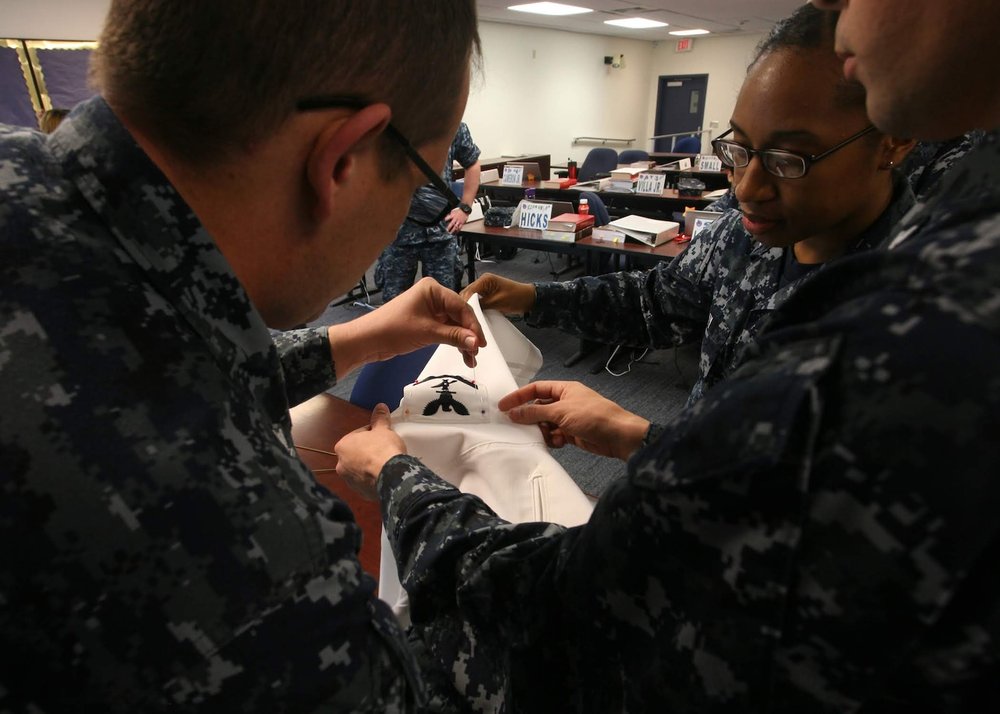Chief Legalman Cheryl Elliott, a Naval Justice School course coordinator, started the first tack with a long white thread.
"Remember to make your stitches nice and even," she said as she demonstrated the stitches for the Sailors who would be stitching the patch next. Seaman James Cameron, Jr., who completed the Legalman Accession Course, was unfamiliar with the recently-revived Navy tradition. While being frocked to petty officer, his new third-class crow was sewn on his sleeve by his shipmates, who were also unfamiliar with the practice. The sewing of Cameron's crow symbolically finalized the group's collective journey through their 11 weeks in the legal curriculum.
"Our heritage and traditions help build pride in our Navy, connect us with past generations of Sailors, and help keep our foundation strong for generations to come", said Chief Legalman Karyn Sigurdsson, Naval Justice School assistant course coordinator. "In particular, the revival of the tradition of tacking on the crow is a way to show our young Sailors that we are here to help guide and mentor them as they continue in the Navy."
The last stitch was sewn by Sigurdsson; by sewing the first and last stitches on Cameron's service dress white uniform, the course instructors metaphorically imprint the equality of all who have worn the crow and the support offered to a new petty officer.
"I felt honored to be able to participate in this genuine military tradition," said Cameron. "It was really special that each petty officer stopped by after they stitched to tell me what knowledge has helped them as a petty officer."
Over the years the tradition of stitching on the new rank had been distorted into a hazing ritual. However, the true spirit of "tacking on the crow" has been revitalized at the Naval Justice School. "It was a great and memorable experience in my Navy career," said Legalman 3rd Class Celeste Jimenez. "This ceremony brought camaraderie."The Naval Justice School provides accession-level and long-term legal training for all Navy, Marine Corps and Coast Guard lawyers, enlisted legal professionals, active and reserve. In addition, Naval Justice School provides training for civilian personnel, sea service commanders, legal officers, senior enlisted and others in the administration of military law.
